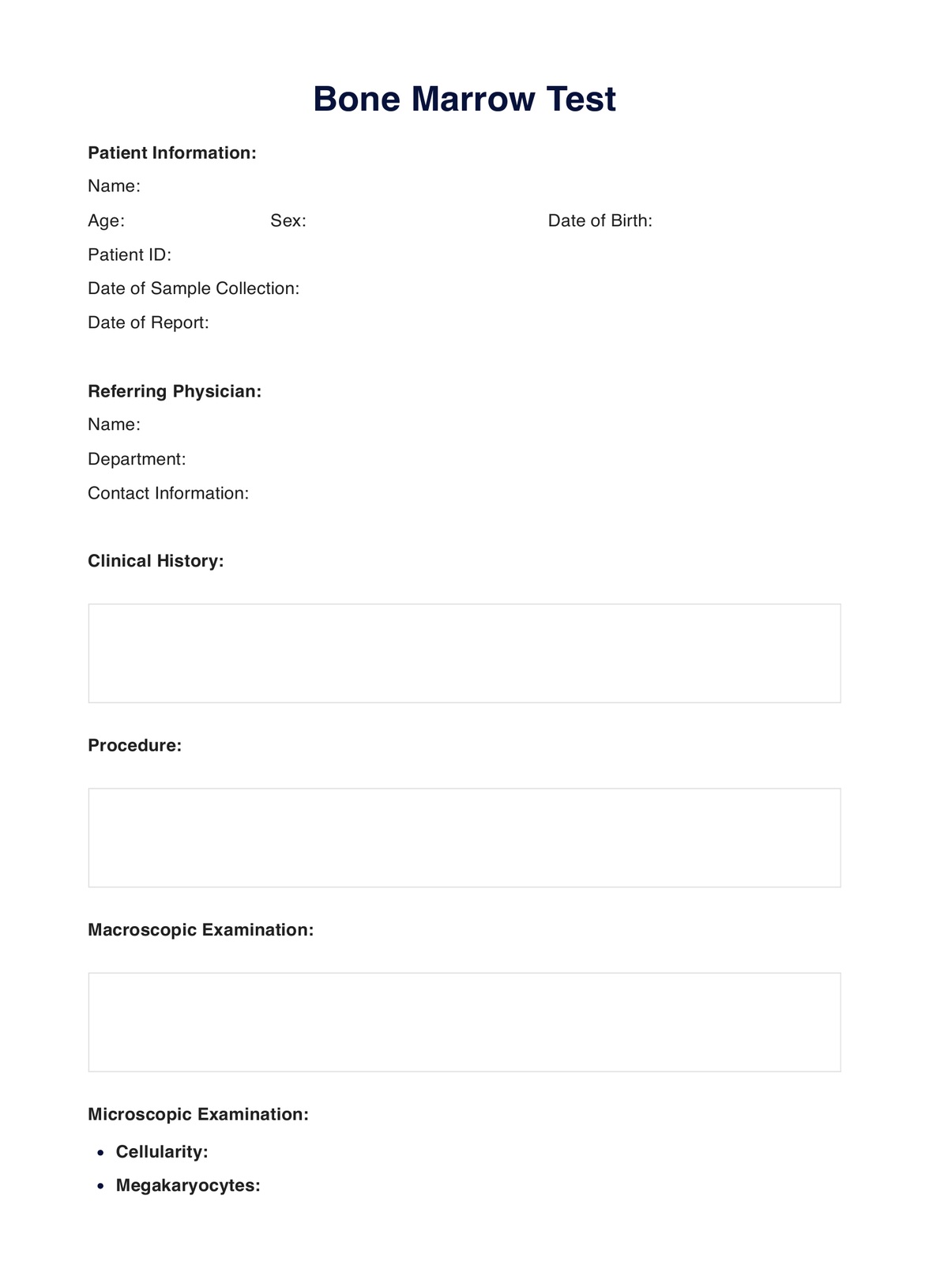Usually, hematologists, oncologists, or internal medicine specialists.

Bone Marrow
Discover the importance of Bone Marrow Tests in diagnosing and monitoring various health conditions. Learn about the procedures, results, and reliability.
Use Template
Bone Marrow Template
Commonly asked questions
They're used when a blood test can't provide enough info about a suspected condition.
They diagnose and monitor various health conditions, including cancers and blood disorders.
EHR and practice management software
Get started for free
*No credit card required
Free
$0/usd
Unlimited clients
Telehealth
1GB of storage
Client portal text
Automated billing and online payments











